Rage Room
Micro UX - Week 4
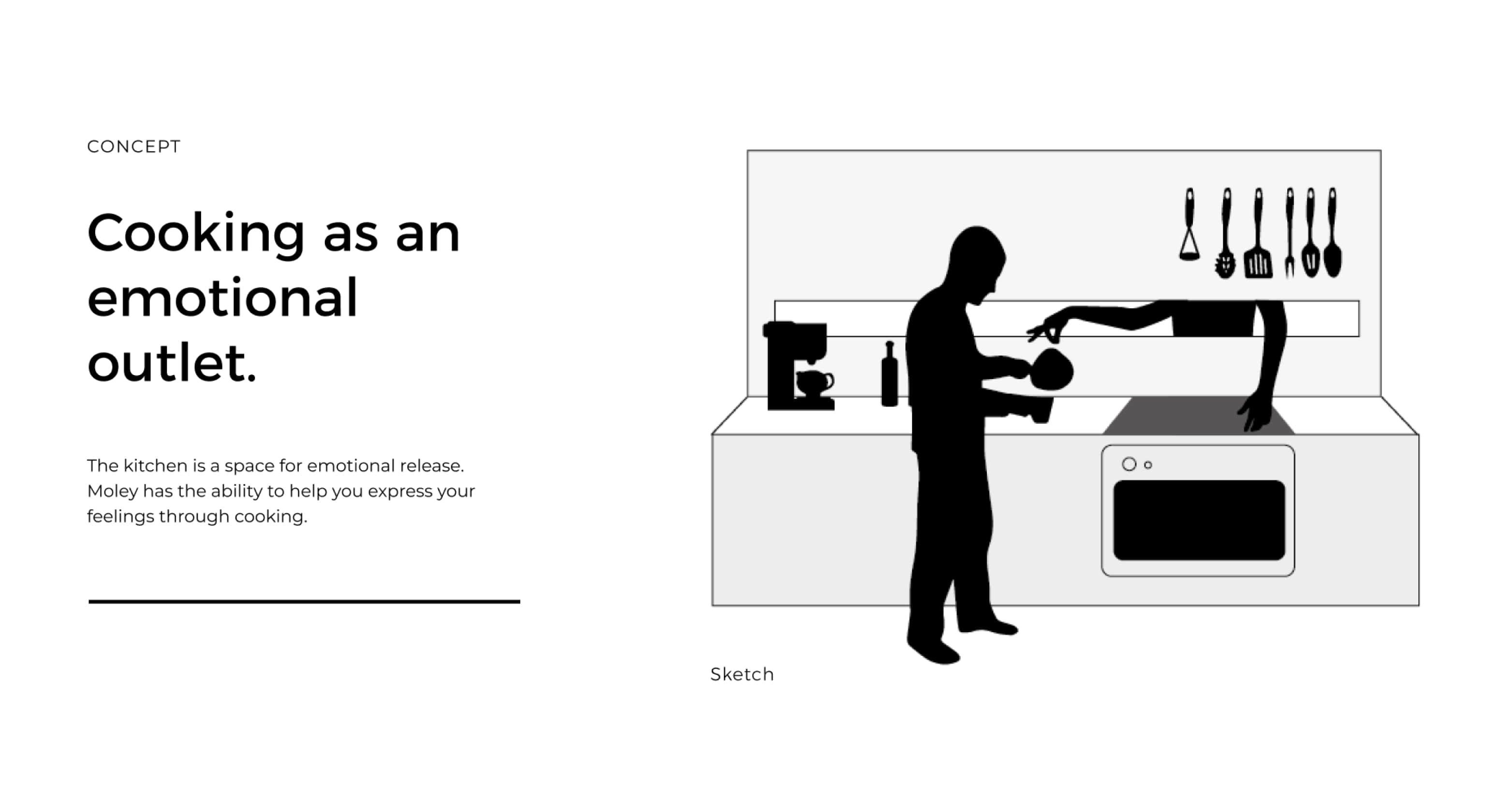
Brief: Design the social relations and interactions between a robot chef and its human guests.
Team: Tiana, Ana, Sanjana, Sylvester
This week is the midpoint presentation, and we are presenting our idea to both the cohort and James from Moley Robotic. Unlike previous meetings, we must communicate our three week’s work briefly and come up with a relatively complete design direction. At the weekend, each of us brainstormed storyboards or scripts to elaborate and enlarge interactions.
Ideation
Considering that we only have few days for preparing, I tried to think of one scenario that could provide natural human-robot interactions: the human attempt to use the leftover but doesn’t know what to make, so he/she/they ask for inspiration from the robot. During the process, they conduct collaborative tasks and learn cooking skills and food culture.
In our first discussion, we layout and organised all the theme on the board. Ana and Sanjana proposed focusing on emotional aspects such as comfort, companionship or nostalgia. Tiana introduced the Naked Vegetables, which examine ‘the potential sex appeal of veggies’. The weirdness and provocativeness inspired us to think about extreme emotions and cases like rage room, and John and Al mentioned that probably would reveal some unexpected interactions.
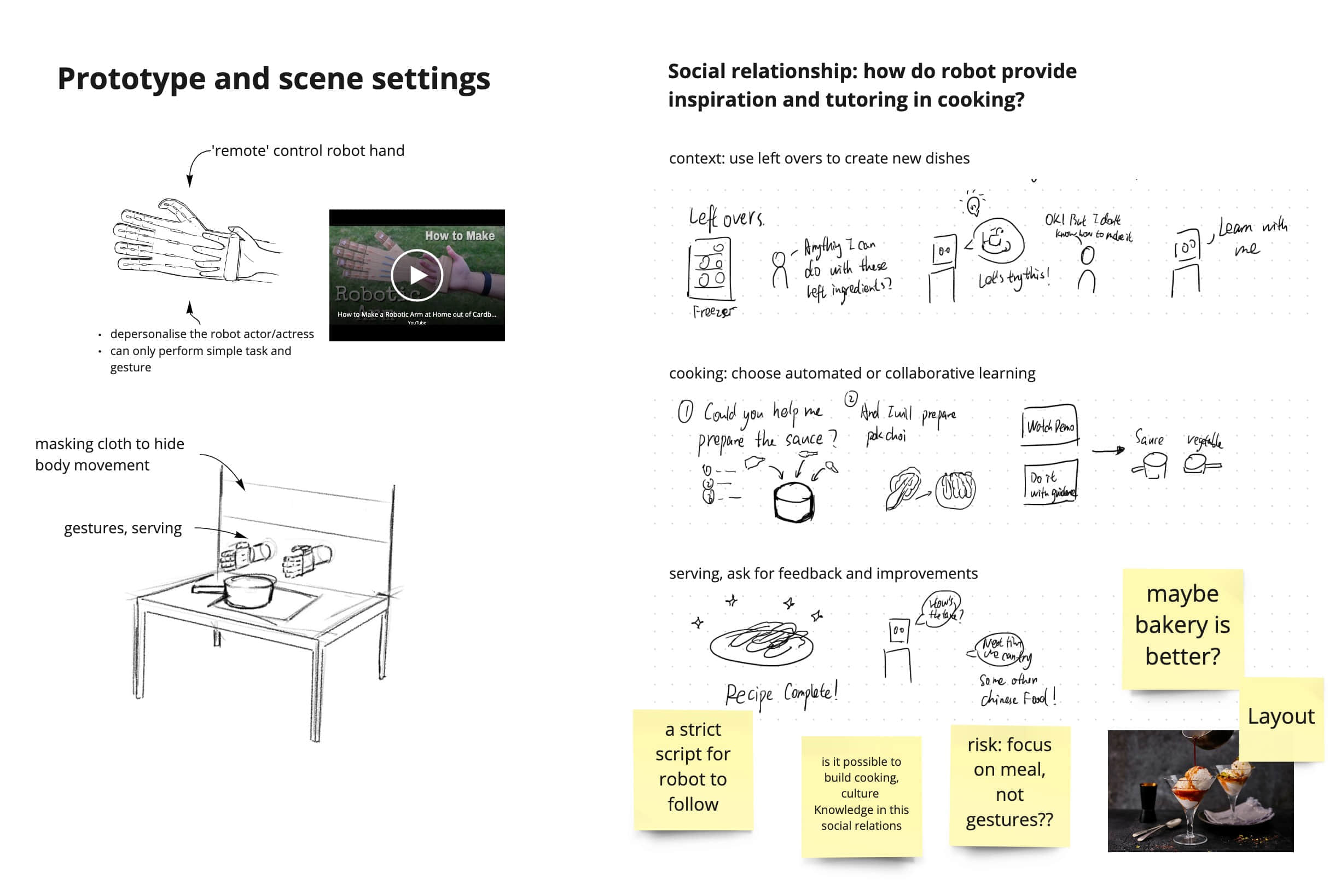
Tiana and I showed similar sketches for the prototyping: build a kitchen using a curtain to block the robot impersonator’s body, leaving just two hands. The purpose of refining the scene is to dehumanise the robot actor.
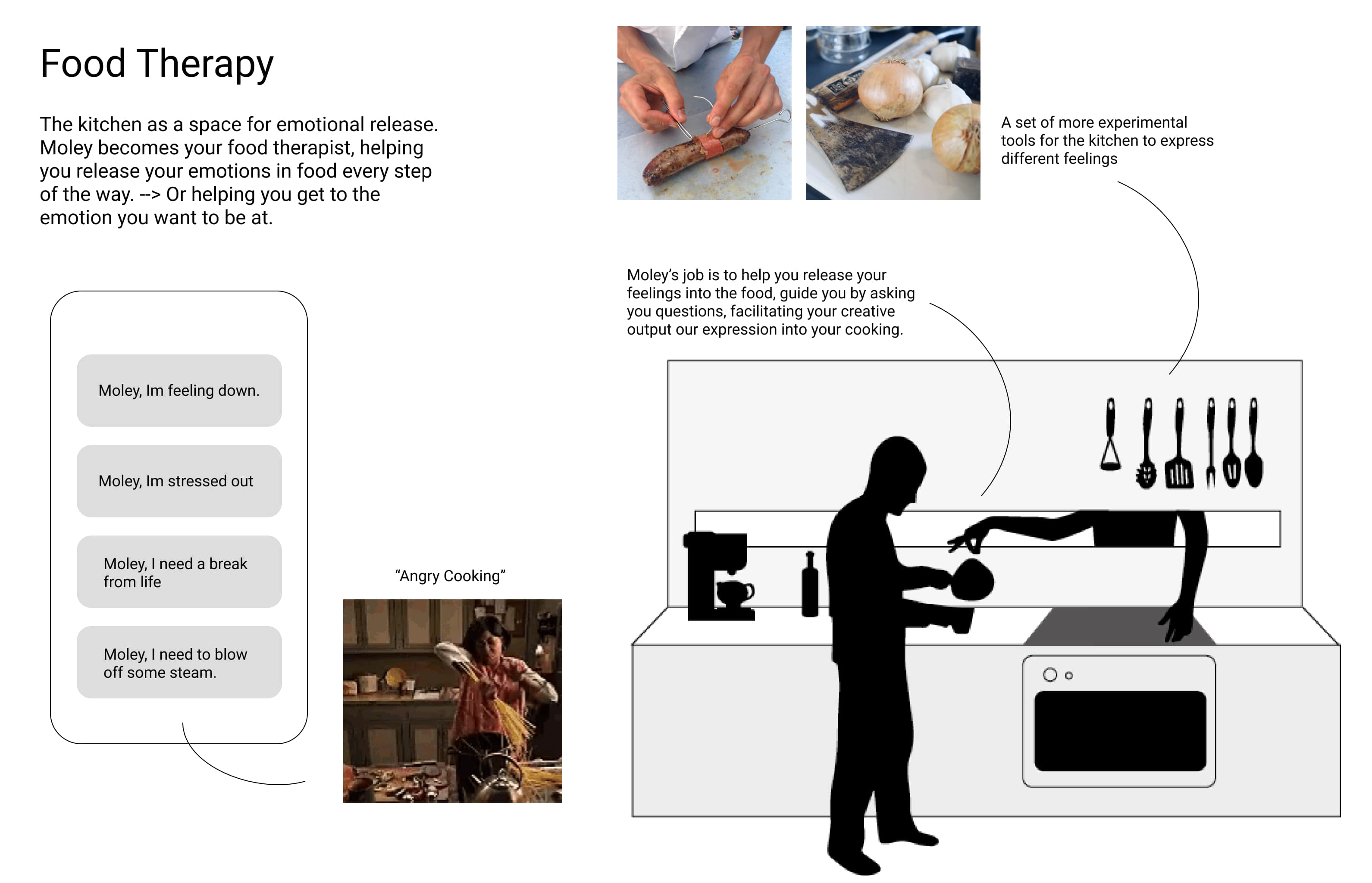
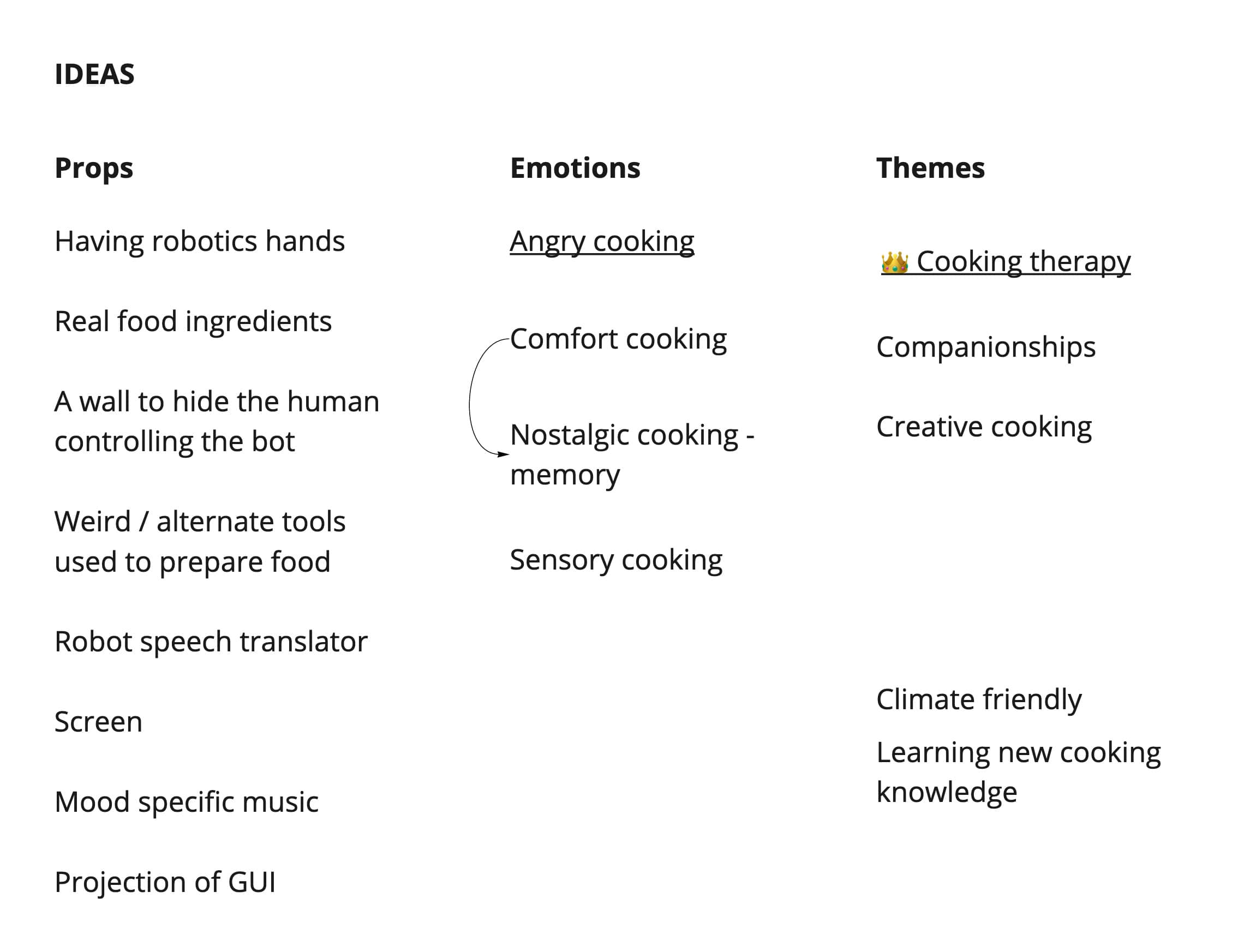
Prototype
Based on the Food Therapy concept, Ana, Sanjana, and Tiana started writing the script to test one emotion for Thursday: Anger. Meanwhile, I tried to make the robot hands from cardboard. Although the tutorial video from different websites looked promising, the first model with strings and straws was unsuccessful: the manipulation was clumsy, and the hand was not strong enough to grab anything. The second one I tried works better: tape some cardboard on a disposable glove and create a sci-fi cybernetic style robot hand.


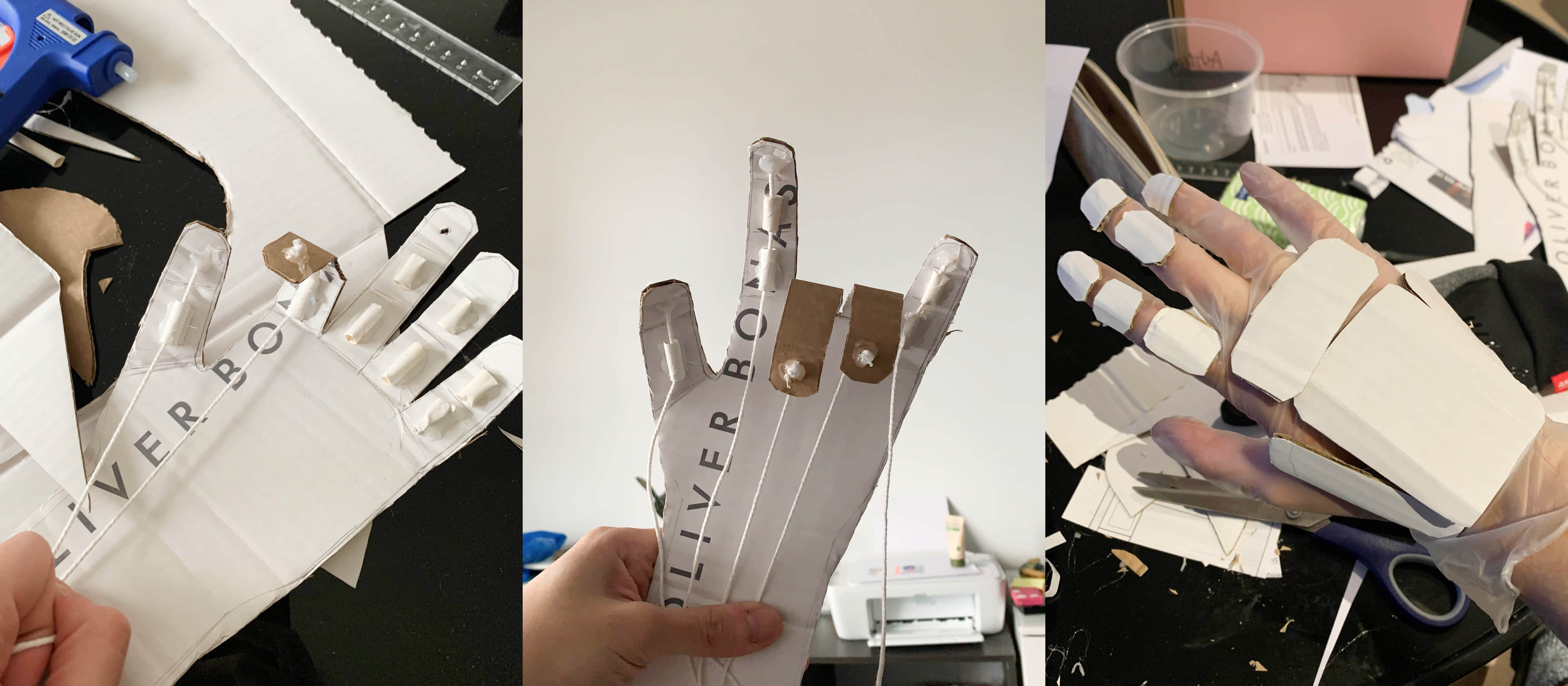
Then we spend two days together building a ‘kitchen’ in the college. Sanjana and Ana designed and printed materials, and all group members stick them on a table and hang the wall with fishing wires in the studio. Surprisingly, the ‘robot’ actor behind the wall could see the table through the gap at hand level. Some wooden plastic utensils like turners, a cutting board, bowls and knives added a warm domestic warm flavour to the arrangement. Overall we thought the prototype create a more realistic atmosphere and hopefully help refine the role-play scenario.
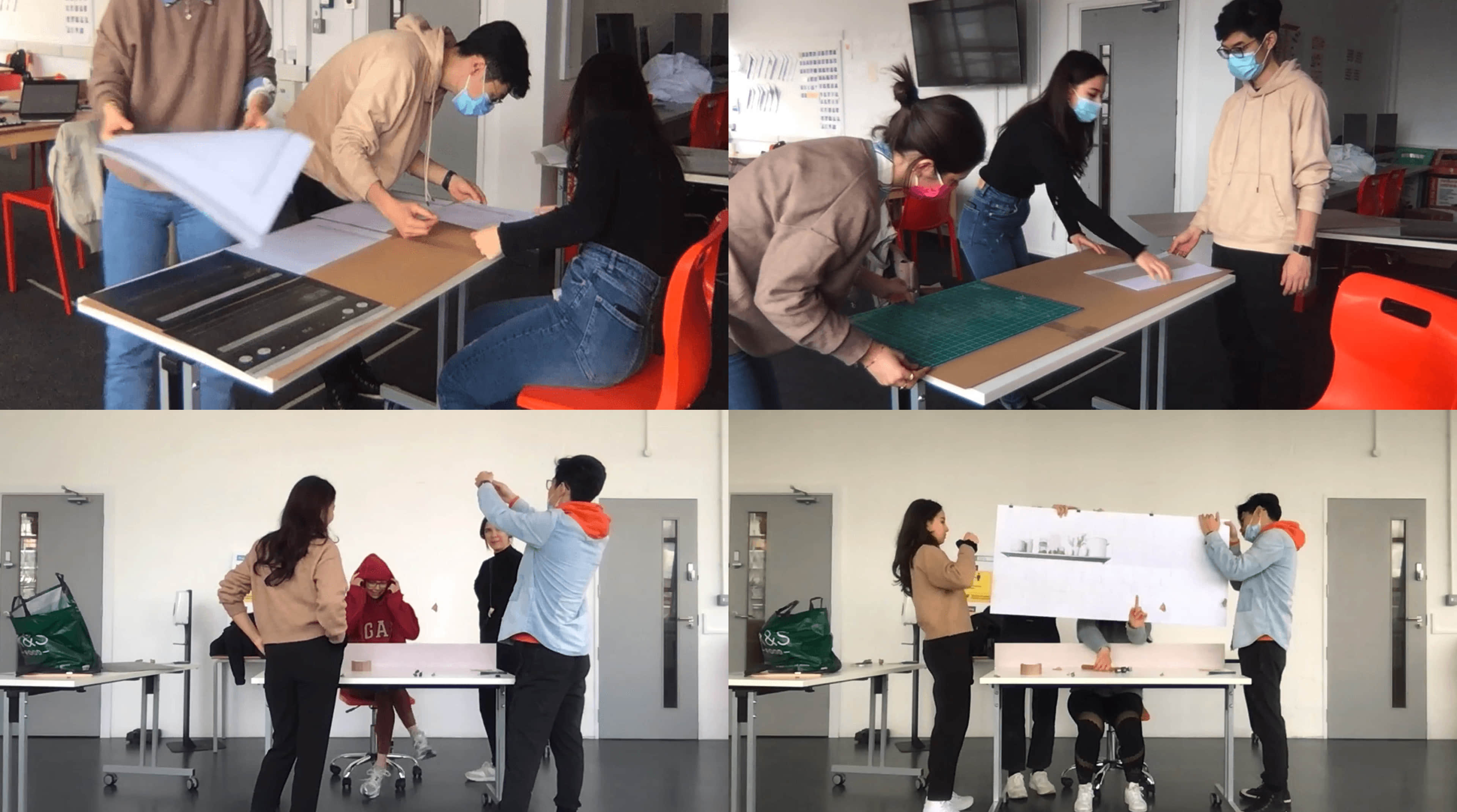
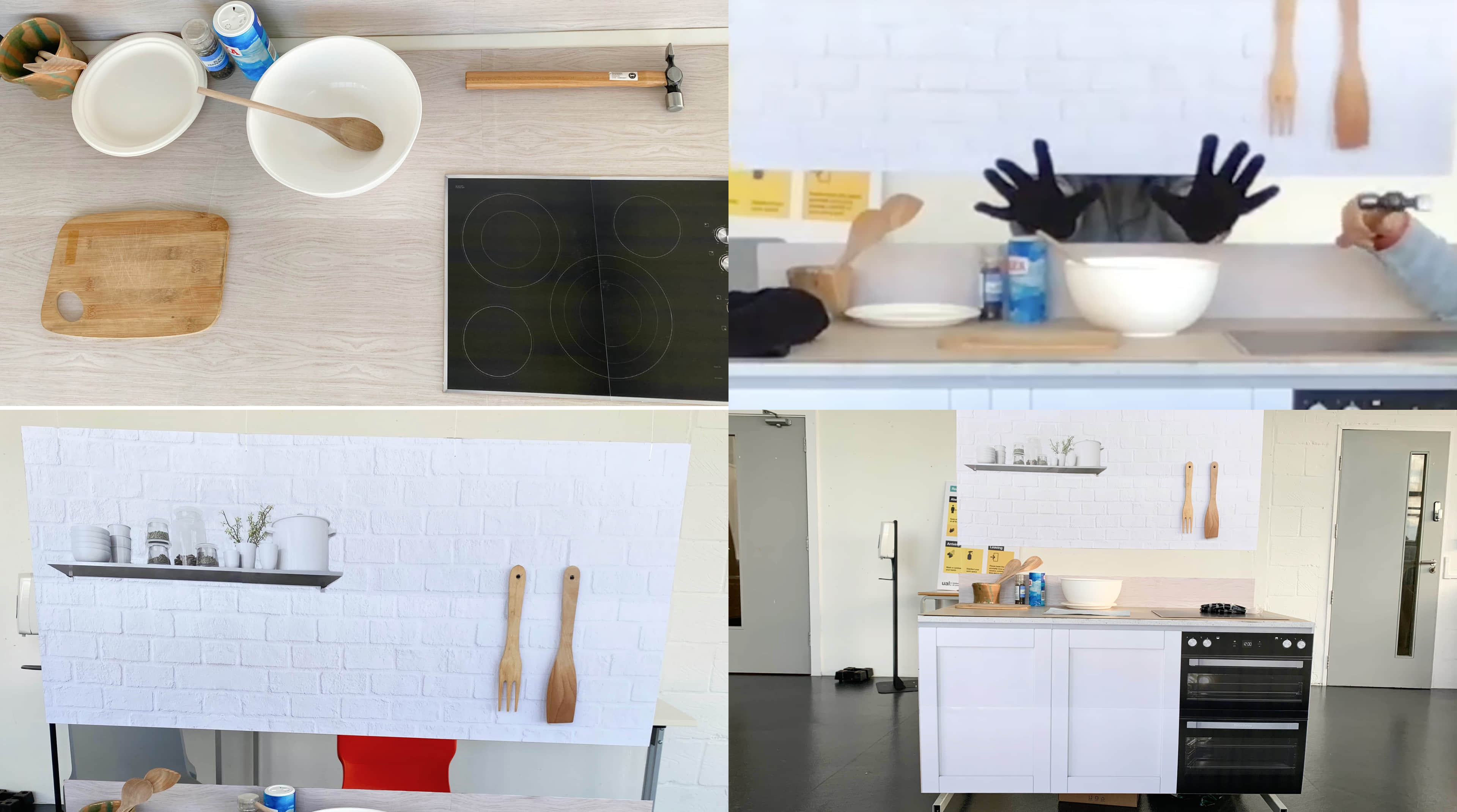
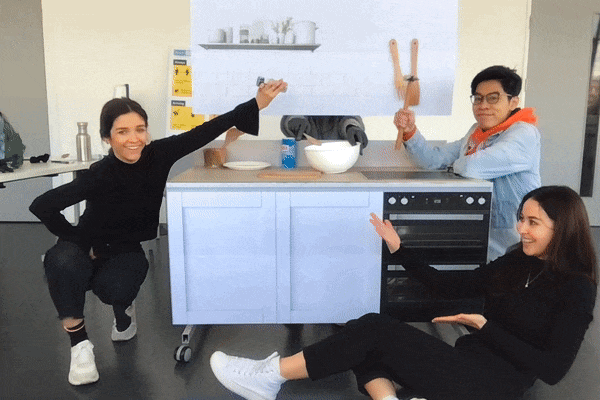
Start Angry Cooking!
We asked Alex to be our human guest, and Sanjana acted as the affectionate cooking robot. In the presentation, the ‘robot’ started asking Alex’s feelings and suggested picking the ‘hammered potato and sausage’. Next, a hammer and a butcher knife are passed by the robot hand, making the whole room laugh! Some heavy metal music was on, and Alex began smashing, chopping and ripping the cooking ingredients, making a mess all over the ground!
Feedback and reflection
The classmates are surprised by our rage room experience. We are delighted that our kitchen setups and script work well, and Alex showed impressive performance skills. However, I think we didn’t deliver our concept well. The whole presentation serves as a performance rather than therapy. John and Al compliment our prototype as a proper fidelity to communicate, but the robot should be a mediator instead of a facilitator in the emotional aspects. Next week, we will give a deeper look into the relation and interaction matrix and categorise different robot modes.
👉🏻 See next week: Interaction-Relation Matrix
References
- Mosko, J.E. and Delach, M.J. (2020). Cooking, Creativity, and Well‐Being: an Integration of Quantitative and Qualitative Methods. The Journal of Creative Behavior.
- EAT ART collective (2019). NAKED VEGETABLES. [online] eatartcollective.nl. Available at: http://eatartcollective.nl/en/naked-vegetables/.